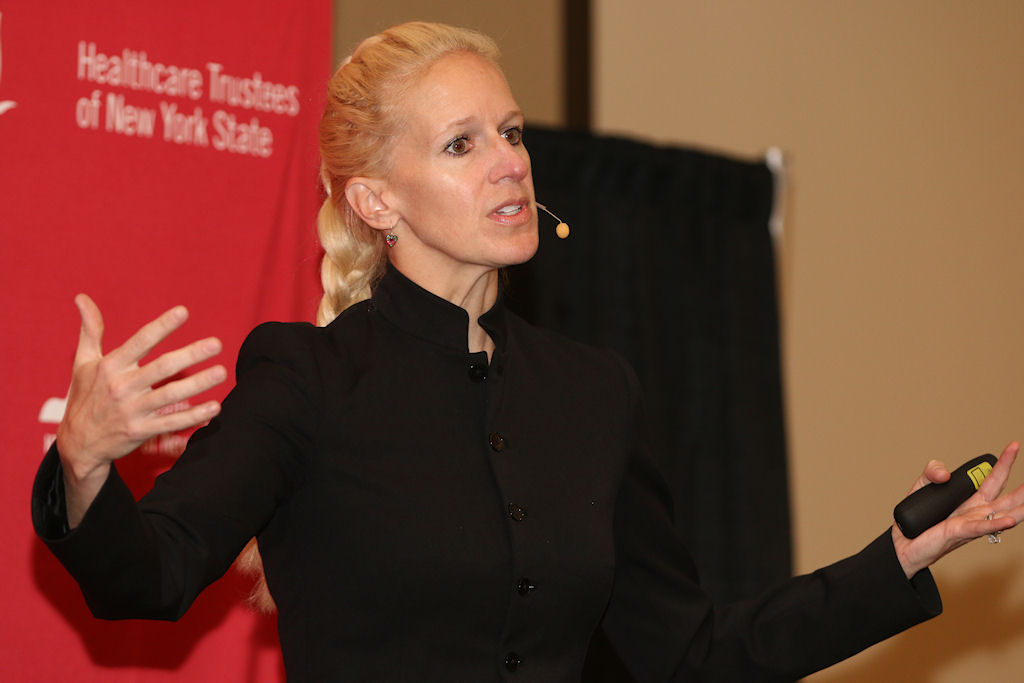The Better Lab goes to the Health Tech Panel at Exygy
In early November, we had the privilege of participating in the Innovators in HealthTech Panel and Showcase hosted by Exygy and Kaiser Permanente (KP) Innovation Consultancy in San Francisco. Amanda spoke on a panel of local leaders in the health tech community, which included Brady Sih (KP), Caroline FitzGerald (Hope Lab), and Megan Zweig (Rock Health). They had thought-provoking discussions about the increasing role of technology in healthcare and the unique challenges that face innovators in this space.
Demoing 360 video of a real-life trauma activation
Some big takeaways from their conversation:
Think on a systems level and design for everyone in the process. Too often, companies and organizations will create tech-based solutions that only benefit a specific group of end users (e.g. clinicians, patients, nurses, administrators, IT). Healthcare is a complex ecosystem of overlapping and interconnected roles. In designing for only one or two groups in mind, you run the risk of creating a solution that creates problems for all the other players in the system.
How might we incorporate systems-level thinking as we try to make/invent/innovate solutions for specific groups in healthcare?
Digital health services need to be accessible to everyone. There is an increasing adoption of digital health services by health systems to facilitate care for their patients and by patients themselves to help them manage their health and chronic conditions. This is particularly palpable in the Bay Area, the home of startups, early adopters and entrepreneurial thinking. On a whole, this is a positive trend (e.g. see Omada Health outcomes research). However, Megan Zweig of Rock Health pointed out that digital health services tend to be more readily accessible to commercially insured patients versus publicly-insured or noninsured patients. Pointedly, she emphasized that these offerings should increase health access for all, not just those who can afford it.
How might we design digital health services that can be equitably accessed by all?
Designing for cool won’t get you anywhere. One of the challenges of health tech (vs. non-health consumer technology) is making sure that the products you create have positive, measurable change in health outcomes for the healthcare challenge you’re trying address. It doesn’t matter how cool or beautiful your new mobile diabetes management app is -- if you can’t find a way to link it to lower HbA1cs or better health outcomes for diabetic patients, then it isn’t moving the needle forward in diabetes care and management. Though it may not be very “sexy”, Amanda stressed the importance of identifying and studying outcome measures that you’d like to change with your health tech innovation. This way, you have a standardized method of evaluating the impact of your product AND you’ll be ready with the currency you need to get buy-in from the medical community.
How might we balance the “cool” factor and usefulness when designing our health tech products?
Include your naysayers! The success of human-centered design interventions in complex systems, whether that be at a big hospital system and/or the community at large, is often dependent on active engagement and buy-in from stakeholders at all levels. Along the way, you’ll encounter individuals who may not initially support your work or are skeptical of your methodology. Don’t shy away from engaging them -- take the time to understand what matters to them and how to fit them into your process. They often turn out be your greatest allies!
How might we engage those who think a bit differently from us?
All in all, we had a blast at the event and met a lot of interesting people. Thank you Exygy and KP Innovation Consultancy for hosting us!





















